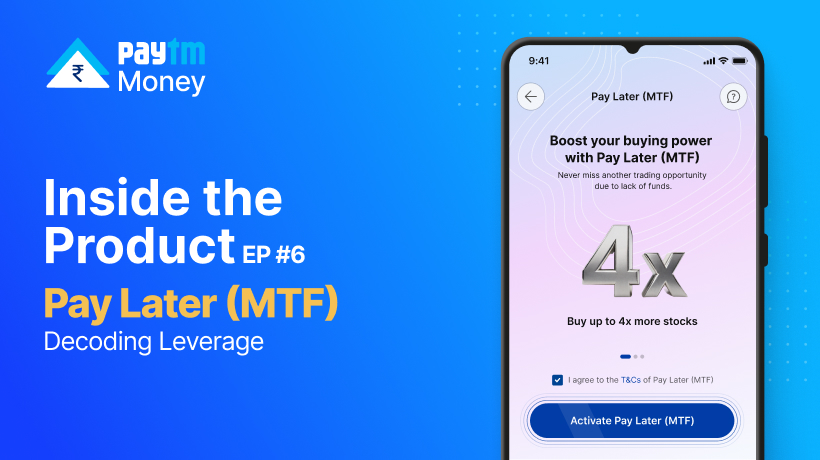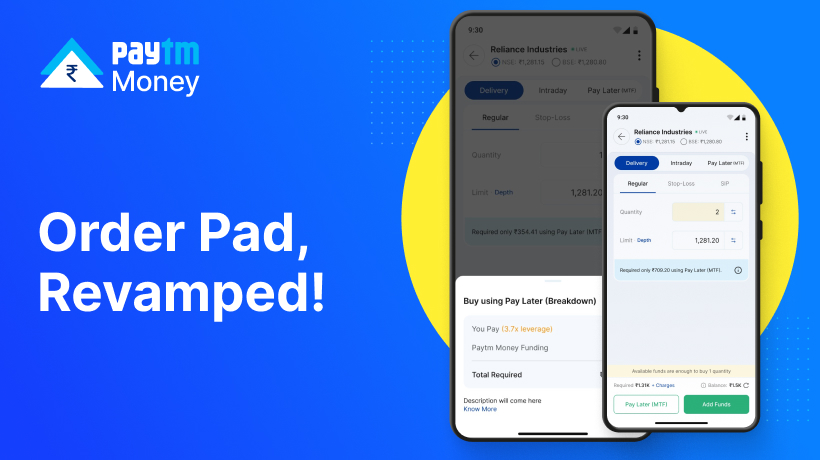Your Stock’s Journey – A Complete Stock Settlement Guide5 min read
Even though stock market works like any other market which has buyers and sellers, the mechanism of trading is different in case of capital markets or stock markets.
You may often wonder what happens to a stock that you buy or sell, why the stock doesn’t immediately reflect in your Demat account.
Every time you buy or sell any stock it does not reflect in your Demat account immediately, because the process after the order is executed has many layers to it. Let us now understand how it works for both delivery and intraday orders.
Delivery
To understand how the delivery order is executed let us look at it with an example.
Suppose you buy a stock on Monday, it is called a T-day or a trading day.
The delivery of that stock into your Demat account will be usually after two days i.e T+2 (by Wednesday evening). But if the T+2 has a holiday then it will move one day ahead.
Once the buy a stock successfully it is visible in the positions section under portfolio on the day you bought the stock. Positions gives a summary of all orders executed today. But after 7 pm, these orders will be only visible in “past order” section.
By next morning (T+1) post 7 am, the stocks that you have purchased will be visible in your portfolio and you can trade those stocks.
However, it takes two days for the delivery to reflect in the Demat account, you don’t need to panic if the shares you bought are not immediately visible in your Demat account.
What happens when the stock is not reflected in my Demat account even after two days?
For an order to be delivered, the market needs a similar number of buyers and sellers, many times there aren’t enough buyers or sellers.
Let us assume that there is a lack of liquidity in the market and your buy order cannot be delivered at T+2 (Demat account) in such a situation on the third day i.e T+3 exchanges have an auction to cover the shortfall and the shares are credited to your Demat account on the third day.
In case, the auction is unsuccessful, the amount is credited back to your account and you start seeing the increase in the available to invest amount so that you can trade. Also, this stock will stop appearing in your holdings as well.
In such a case the stock that is reflected in your portfolio at T+1 will cease to exist there if the delivery has not happened. Only after the auction, once you get the shares by the end of T+3, your portfolio will be updated on T+4.
In order to keep you updated through this process, our customer support team will be sending you emails about all the happenings.
In a scenario where you decide to sell your holdings, you need to use the T-pin (which is issued by CDSL, the depository where your Demat account is held) after which you can sell your holdings.
Once the order is placed the stocks from your portfolio will be debited and if the sell order that is placed is successful your demat account will be debited with the amount.
However, if a sell order is still pending even after the market is closed, your Demat account is not debited and will continue to be in your portfolio from next day onwards.
In case of pending orders, one can modify the price and quantity from the order section to increase the chances of successful execution.
Intraday order
For intraday order, if you buy a stock and don’t sell it by 3 pm or intraday squareoff time, Paytm Money automatically squares off your position.
In case the position is not squared off due to market conditions, it becomes a delivery order and the stock is credited to your demat account.
In an intraday sell order, you have to buy the shares to square off the holding.
If it is not squared off manually or automatically, the order goes in the auction directly and your account will be debited with whatever price the stock is sold at. Exchanges also have penalties for such trades, in order to safeguard from such penalties, you can buy the same stock in the next trading session which can be used as a square off for the original intraday sell position.
For instance, you have put forth an intraday sell order for Zee Entertainment Enterprises which isn’t squared off, to recover that position you can buy the stock in the same quantity which can help you in squaring off your own position.
FAQs –
What should I do, if my positions are not updated after the order is executed?
Once the order is executed, your order will be visible in the positions card and today’s orders section. Later, at 7 pm, you can find those orders in the “past orders” section.
When do my portfolio holdings get updated?
Holdings are usually updated by 7 am (the next morning). On T+1, your purchased stocks will be visible in the portfolio and you can trade those stocks.
What if I don’t get shares even after T+2 days?
Sometimes, the stock is not available i.e there is a shortage of buyers or sellers, in this case, the exchange conducts an auction on the third day i.e T+3 and the shares are credited in your account. But if the auction is unsuccessful, the money is credited back into your account.
Where can I find my orders after 7 pm?
Everyday, at 7 pm, T day orders are moved to the “past orders” section and then on T+1 they are reflected in the portfolio.
What happens if my intraday positions are not squared off by me?
If your intraday positions are not squared off even after 3 pm, Paytm Money triggers an automated square off. An automated square off will incur additional charges of Rs. 20 and GST per position.
What if my intraday positions are not automatically squared off?
If the intraday buy positions are not squared off then the trade is converted into delivery trade and the shares are credited to your account at T+2.
In case of sell positions, they are auctioned by exchanges, and the amount is credited to your account but a trader is also penalised for that.
What steps do I take to avoid intraday auction penalties?
In order to avoid any penalty especially for an intraday sell position, you can add a counter buy position so that the square off can happen within your holdings itself.




